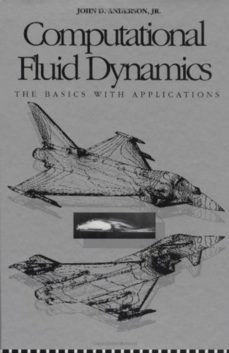Imprescindibles
Ficción
No Ficción
Ciencias y tecnología Biología Ciencias Ciencias naturales Divulgación científica Informática Ingeniería Matemáticas Medicina Salud y dietas Filología Biblioteconomía Estudios filológicos Estudios lingüísticos Estudios literarios Historia y crítica de la Literatura
Humanidades Autoayuda y espiritualidad Ciencias humanas Derecho Economía y Empresa Psicología y Pedagogía Filosofía Sociología Historia Arqueología Biografías Historia de España Historia Universal Historia por países
Infantil
Juvenil
#Jóvenes lectores Narrativa juvenil Clásicos adaptados Libros Wattpad Libros Booktok Libros de influencers Libros de Youtubers Libros Spicy Juveniles Libros LGTBIQ+ Temas sociales Libros ciencia ficción Libros de acción y aventura Cómic y manga juvenil Cómic juvenil Manga Shonen Manga Shojo Autores destacados Jennifer L. Armentrout Eloy Moreno Nerea Llanes Hannah Nicole Maehrer
Libros de fantasía Cozy Fantasy Dark academia Hadas y Fae Romantasy Royal Fantasy Urban Fantasy Vampiros y hombres lobo Otros Misterio y terror Cozy mistery Policiaca Spooky Terror Thriller y suspense Otros
Libros románticos y de amor Dark Romance Clean Romance Cowboy Romance Mafia y amor Romance dramatico Romcom libros Sport Romance Otros Clichés Enemies to Lovers Friends to Lovers Hermanastros Slow Burn Fake Dating Triángulo amoroso
Cómic y manga
Novela gráfica Novela gráfica americana Novela gráfica europea Novela gráfica de otros países Personajes, series y sagas Series y sagas Star Wars Superhéroes Cómics DC Cómics Marvel Cómics otros superhéroes Cómics Valiant
eBooks
Literatura Contemporánea Narrativa fantástica Novela de ciencia ficción Novela de terror Novela histórica Novela negra Novela romántica y erótica Juvenil Más de 13 años Más de 15 años Infantil eBooks infantiles
Humanidades Autoayuda y espiritualidad Ciencias humanas Economía y Empresa Psicología y Pedagogía Filosofía Historia Historia de España Historia Universal Arte Cine Música Historia del arte
Ciencia y tecnología Ciencias naturales Divulgación científica Medicina Salud y dietas Filología Estudios lingüísticos Estudios literarios Historia y crítica de la Literatura Estilo de vida Cocina Guías de viaje Ocio y deportes
JOHN D. ANDERSON
Recibe novedades de JOHN D. ANDERSON directamente en tu email
Filtros
Del 1 al 6 de 6
MCGRAW-HILL 9780071263184
Chapter opening Road Maps which show how to use material. How do your students currently learn HOW to use the material? How do your students currently learn HOW to use the material? Refer to the beginning of any chapter Refer to the beginning of any chapter SHOWS how to use the material. SHOWS how to use the material. Chapter opening Road Maps which show how to use material. Preview Boxes providing motivating rationale for learning the given chapter's material. Do you find that your students at times have trouble pulling out the essential information of the chapter? Would a text that explains why the material is important, within the chapter be beneficial? Provides the reader with insight about what each chapter is about and why the material is so important. Do you find that your students at times have trouble pulling out the essential information of the chapter? Would a text that explains why the material is important, within the chapter be beneficial? Provides the reader with insight about what each chapter is about and why the material is so important. Preview Boxes providing motivating rationale for learning the given chapter's material.
Ver más
Tapa blanda
MCGRAW-HILL 9780071254083
In keeping with its bestselling previous editions, "Fundamentals of Aerodynamics", fourth edition, offers the most readable, interesting, and up-to-date overview of aerodynamics to be found in any text. The classic organization of the text has been preserved, with new stand-alone viscous flow sections at the end of various chapters to conceptualize the coverage of this topic in part 4, and complement discussion of fundamental principles in part 1, inviscid incompressible flow in part 2, and inviscid compressible flow in part 3. Historical topics, carefully developed examples, numerous illustrations, and a wide selection of chapter problems are found throughout the text to motivate and challenge students of aerodynamics.
Ver más
Tapa blanda
MCGRAW-HILL 9780070016859
This pioneering text provides an excellent introduction to CFD at the senior level in aerospace and mechanical engineering, and to some extent, chemical and civil engineering. It can also serve as a one-semester introductory course at the beginning graduate level, as a useful precursor to a more serious study of CFD in advanced books. It is presented in a very readable, informal, enjoyable style.
Ver más
Tapa dura
CAMBRIDGE UNIVERSITY PRESS 9780521817875
The airplane has experienced phenomenal advancement in the twentieth century, changing at an exponential rate from the Wright brothers to the present day. In this ground breaking work based on new research, Dr John D. Anderson, Jr, a curator at the National Air and Space Museum, analyzes the historical development of the conceptual design process of the airplane. He aims to answer the question of whether airplane advancement has been driven by a parallel advancement in the intellectual methodology of conceptual airplane design. In doing so, Anderson identifies and examines six case histories of 'grand designers' in this field, and challenges some of the preconceived notions of how the intellectual methodology of conceptual airplane design advanced. Filled with over one hundred illustrations which bring his words to life, Anderson unfolds the lives and thoughts of these grand designers.
Ver más
Tapa dura
Del 1 al 6 de 6



























